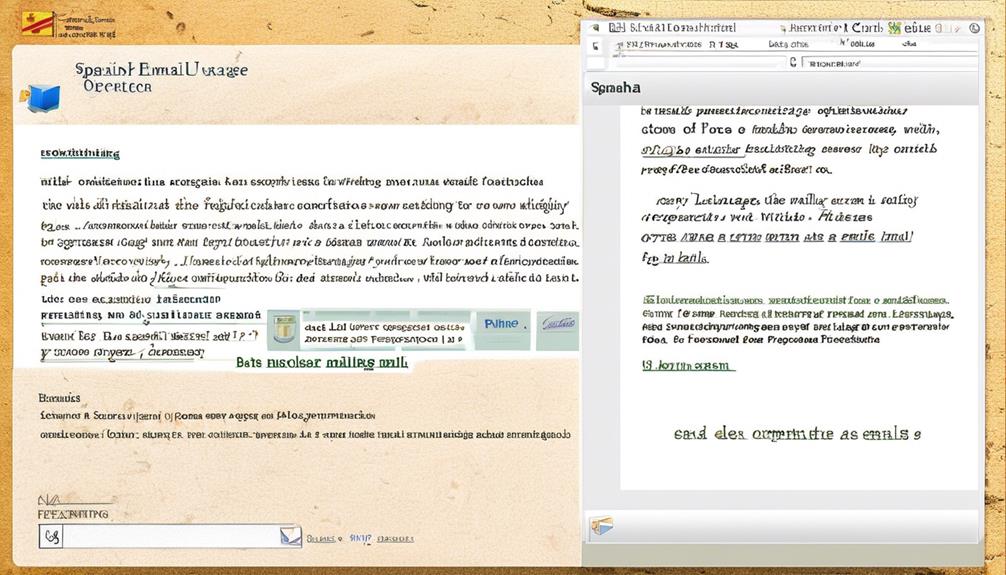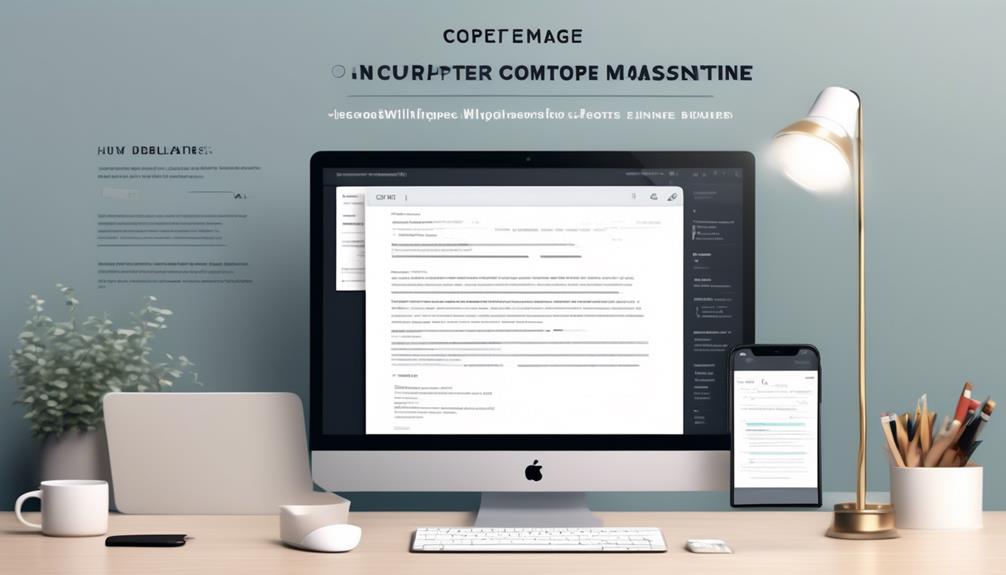Recently, it came to our attention that Spanish ranks as the world’s second most spoken language among native speakers, emphasizing its significance in both communication and business realms.
But when it comes to writing emails in Spanish, there are certain nuances and formalities that need to be considered. Understanding the appropriate levels of formality, greetings, and sign-offs is essential for effective communication in Spanish-speaking environments.
Join me as we explore the intricacies of writing professional emails in Spanish and learn valuable tips for crafting impactful and culturally appropriate messages.
Key Takeaways
- Understanding the levels of formality in Spanish is crucial for effective communication in email.
- Selecting an appropriate greeting is crucial for establishing formality and respect in Spanish emails.
- Polite and formal sign-offs are commonly used to conclude Spanish emails.
- Maintaining a formal tone and using appropriate language based on formality is important in Spanish email writing.
Levels of Formality in Spanish
Understanding the nuances of formality levels in Spanish is crucial for effective communication in written correspondence, particularly when crafting a formal email in Spanish. The levels of formality in Spanish greatly influence the choice of greetings, sign-offs, and addressing in email writing. It's essential to discern between the informal and formal address, as this determines the usage of different possessive adjectives and indirect object pronouns in Spanish.
In formal Spanish correspondence, 'usted' is used for formal address, requiring the use of 'su' as the possessive adjective and 'le' as the indirect object pronoun. On the other hand, informal address employs 'tú' and 'te' as the familiar pronouns, with the corresponding possessive adjectives and indirect object pronouns. Mastery of these distinctions is crucial for conveying respect and professionalism in formal email writing.
When crafting a formal email in Spanish, being mindful of the appropriate levels of formality is paramount. From the salutation to the closing remarks, adhering to the conventions of formality levels in Spanish is a sign of linguistic proficiency and cultural awareness.
Email Greetings in Spanish
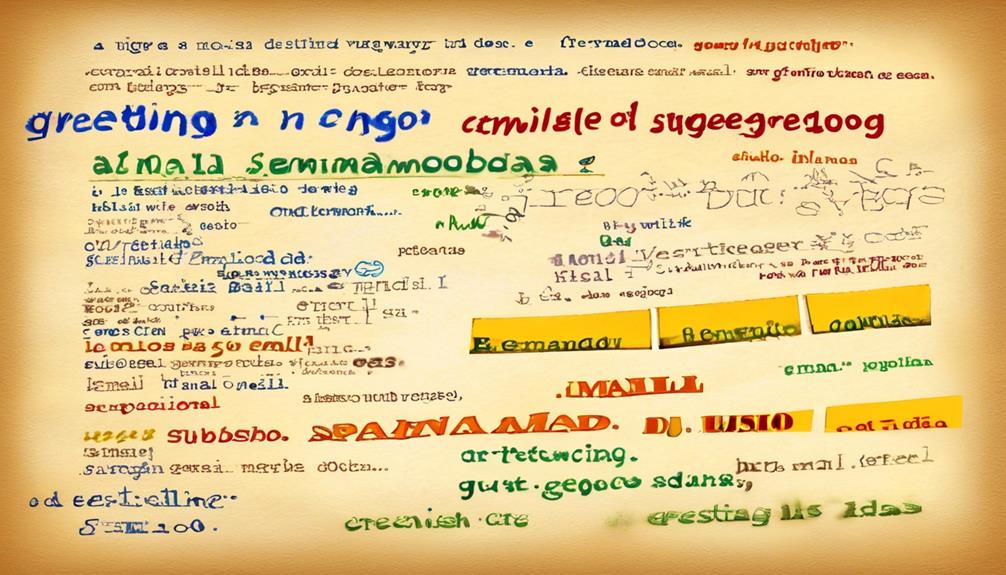
In Spanish email correspondence, selecting an appropriate greeting plays a pivotal role in establishing the desired level of formality and respect. When writing a formal email in Spanish, it is essential to use the correct greeting to convey professionalism and courtesy. The table below outlines some common email greetings and their English equivalents:
| Spanish Greeting | English Equivalent |
|---|---|
| A quien corresponda | To whom it may concern |
| Estimado Señor (apellido) | Dear Mr. (last name) |
| Querido (nombre) | Dear (name) |
| Saludos cordiales | Best regards |
In addition to using the appropriate greeting, addressing the reader with 'usted' or 'ustedes' maintains a formal tone in Spanish email writing. Understanding these nuances in email greetings in Spanish is crucial for effectively communicating respect and professionalism.
Email Sign-Offs in Spanish
We commonly use various polite and formal sign-offs to conclude emails in Spanish, such as 'Saludos cordiales' and 'Atentamente', which convey respect and professionalism.
In formal business communication in the Spanish language, it's important to choose an appropriate sign-off that reflects the desired tone and level of formality.
Another formal sign-off commonly used in Spanish email communication is 'Cordialmente', which translates to 'cordially' in English. Similarly, 'Sinceramente' is a polite way to close an email in Spanish, meaning 'sincerely' in English.
For a more personal touch while maintaining formality, 'Para cualquier cosa estoy a su disposición' can be used, expressing availability for further assistance.
When writing formal emails in Spanish, it's crucial to select a sign-off that aligns with the overall tone of the message and the level of respect and professionalism required in the specific context.
Formal Email in Spanish Example
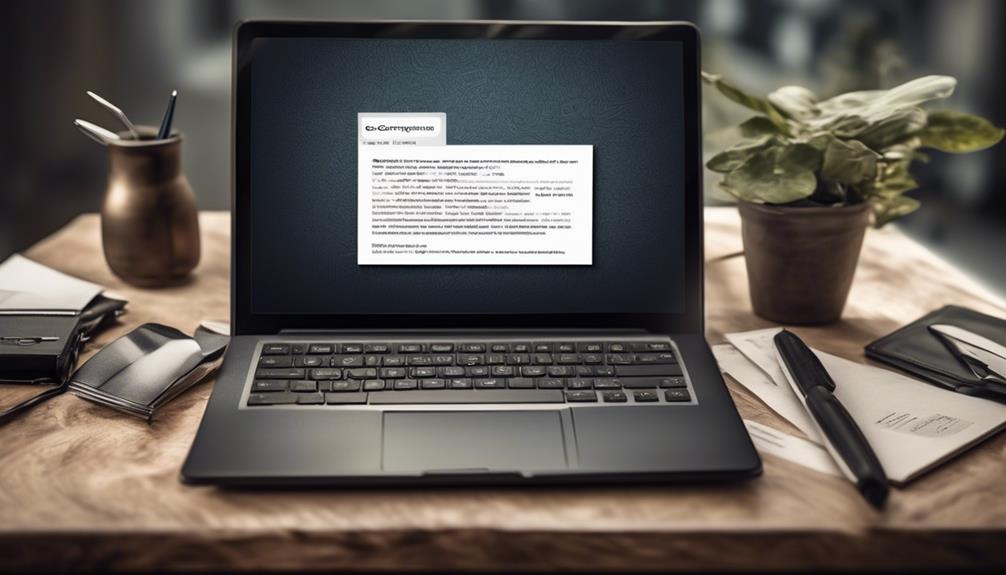
Formal email greetings and sign-offs in Spanish play a crucial role in conveying respect and professionalism, as discussed in the previous subtopic on Email Sign-Offs in Spanish. When writing an email and addressing someone formally (usted), it's important to use the appropriate phrases to show respect. Below is a table with useful examples of formal email greetings and sign-offs in Spanish:
| Greetings | Sign-Offs |
|---|---|
| A quien corresponda | Saludos cordiales |
| Muy señor mío | Atentamente |
| Estimado Señor (apellido) | Cordialmente |
| Don (nombre) | Sinceramente |
| Para cualquier cosa estoy a su disposición |
When crafting a formal email in Spanish, it's essential to choose the right greeting and sign-off to maintain a professional tone. These examples provide a good starting point for writing a respectful and courteous formal email in Spanish.
Informal Email in Spanish Example
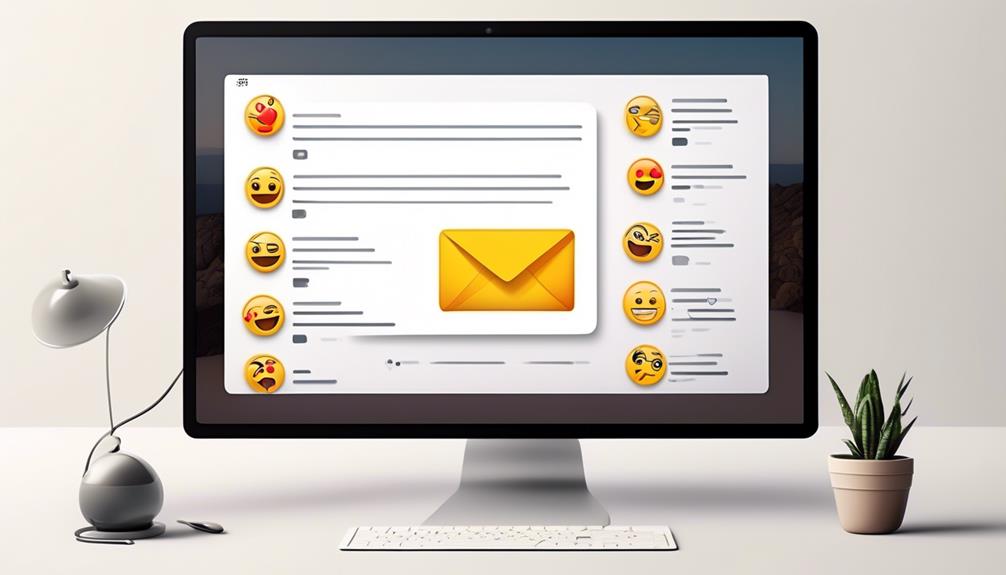
Let's talk about the informal tone often used in Spanish emails.
When writing informal emails in Spanish, it's common to start with greetings like 'Querido (nombre)' or 'Buenos (días/tardes)'.
We also use closings such as 'Saludos cordiales' and 'Atentamente' to wrap up the email in an informal manner.
Greetings and Salutations
Beginning an informal email in Spanish with the appropriate greeting and salutation is essential for establishing a warm and friendly tone. When addressing someone informally, you can use 'Querido/a' followed by the recipient's name.
For informal greetings, 'Buenos (días/tardes)' is the standard Spanish equivalent.
On the other hand, if you need to address someone in a formal letter, 'Estimado/a' is the suitable choice for an informal email in Spanish.
Additionally, for casual and informal greetings in Spanish emails, 'Hola' and 'Buenas' are commonly used.
Lastly, when signing off your informal Spanish email, you can use 'Gracias' or 'Un saludo' to convey appreciation and warmth.
These email greetings and salutations are the common ways to begin and end informal emails in Spanish.
Informal Tone
To establish a warm and friendly tone in an informal email in Spanish, it's important to maintain a casual and personal approach when addressing the recipient, such as using 'Querido/a' or 'Hola', and concluding with expressions like 'te quiero' or 'nos vemos pronto'.
When aiming for a less formal tone in Spanish emails, consider the following:
- Use familiar greetings such as 'Buenos días/tardes' or 'Hola' to create a relaxed atmosphere from the start.
- Employ a conversational tone by using colloquial language and expressions that reflect closeness and familiarity.
- Conclude the email with informal sign-offs like 'gracias' or 'un saludo', and consider adding personal touches like 'te quiero' or 'nos vemos pronto' for a warm and affectionate conclusion.
Spanish Email Writing Vocabulary
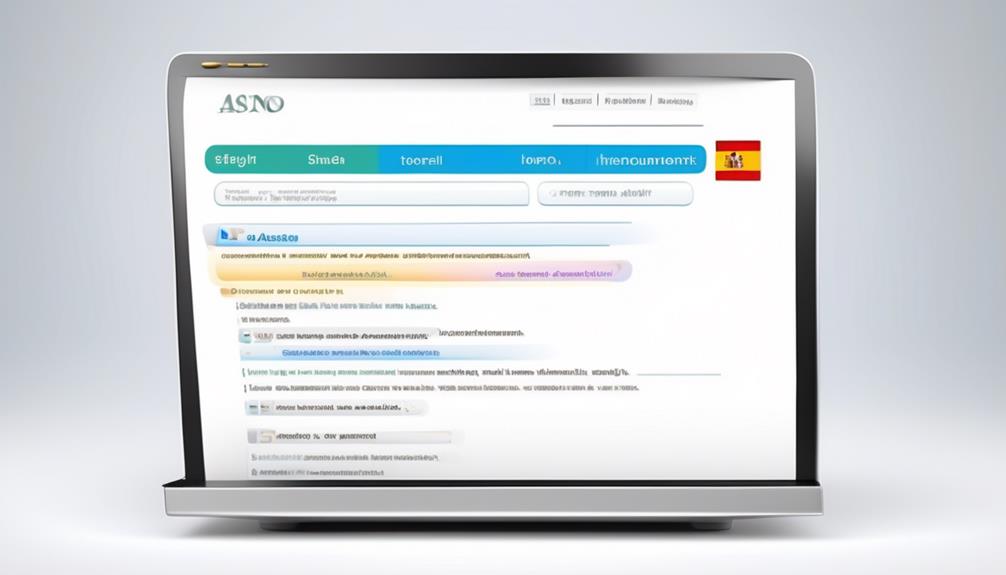
Spanish email writing vocabulary includes specific greetings and sign-offs that vary based on the level of formality required in the correspondence.
When addressing someone formally (usted), it's customary to use 'Estimado/a (nombre)' as the equivalent of 'Dear' in English.
On the other hand, when addressing someone informally (tú), 'Querido/a (nombre)' is commonly used.
In cases where the recipient is unknown or when writing to a general inbox, 'A quien corresponda' is appropriate for formal email greetings.
As for the sign-offs, 'Saludos cordiales' is a widely accepted equivalent to 'best regards' in Spanish email writing.
It's important to be mindful of the appropriate level of formality in your correspondence, as it sets the tone for the entire email.
Understanding these nuances in Spanish email writing vocabulary is crucial for effective communication, especially in professional settings.
How to End a Formal Email in Spanish
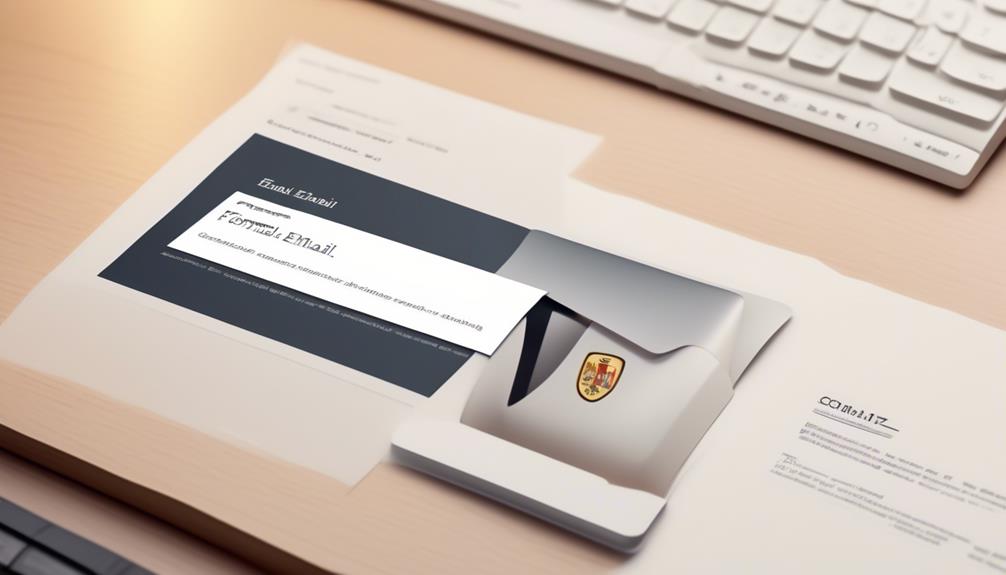
Understanding the nuances of Spanish email writing vocabulary is crucial for effective communication, especially in professional settings. When concluding a formal email in Spanish, it's important to express availability and anticipation for a response, while maintaining a respectful tone with phrases such as 'Cualquier cosa estoy a su disposición' and 'Le saludo atentamente'.
Here are three key points to consider when ending a formal email in Spanish:
- Express Availability: Convey your willingness to assist further or provide additional information by using phrases like 'Cualquier cosa estoy a su disposición' (I am at your disposal for anything) or 'Quedo a la espera de su pronta respuesta' (I look forward to your prompt response).
- Maintain Formality: End the email with a courteous and formal closing such as 'Le saludo atentamente' (Yours sincerely) or 'Saludos cordiales' (Best regards) to uphold a respectful tone and show professionalism.
- Combine Gratitude and Regards: Consider combining expressions of gratitude and regards, for example, 'Gracias y saludos' (Thank you and regards), to convey appreciation and respect simultaneously.
How to Apply for a Job Through Email in Spanish
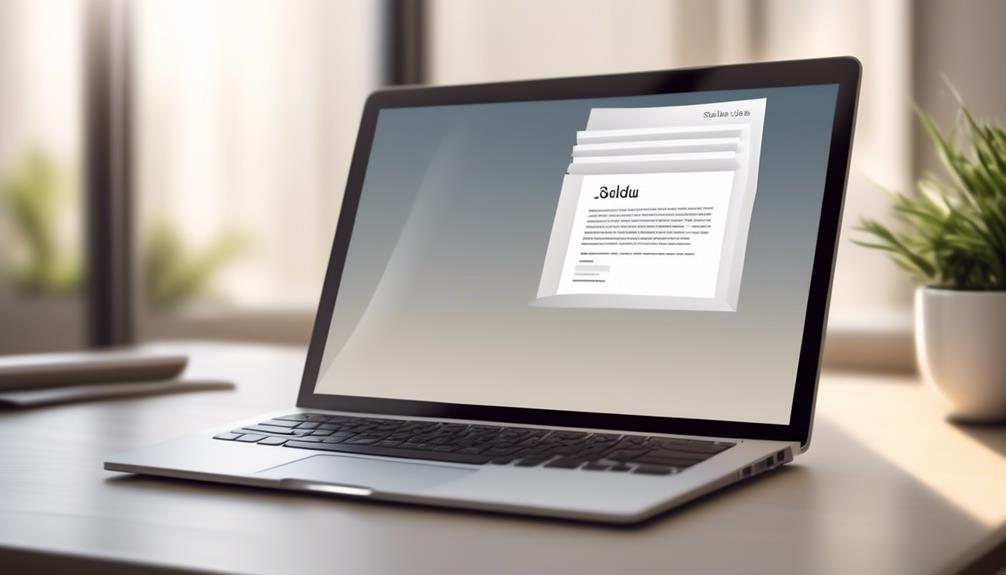
When applying for a job through email in Spanish, it's essential to use formal greetings like 'Estimado/a' and clearly state the position you're seeking and where it was advertised. In the Spanish version of the email, it's important to begin with a polite salutation and introduce yourself briefly.
Express your interest in the advertised position and mention where you learned about the job opening. Highlight your relevant experience, skills, and qualifications, ensuring they align with the job requirements. It's vital to convey enthusiasm for the opportunity and express a willingness to learn more about the position. Politely request any additional information regarding the job or the company.
Conclude the email with a formal closing, such as 'Saludos cordiales' or 'Atentamente,' followed by your full name. Remember to attach any relevant documents, such as your resume or cover letter, and to use a clear and professional email subject line.
This approach ensures that your email is clear, professional, and effectively communicates your interest in the job.
Making Inquiries in Spanish Emails
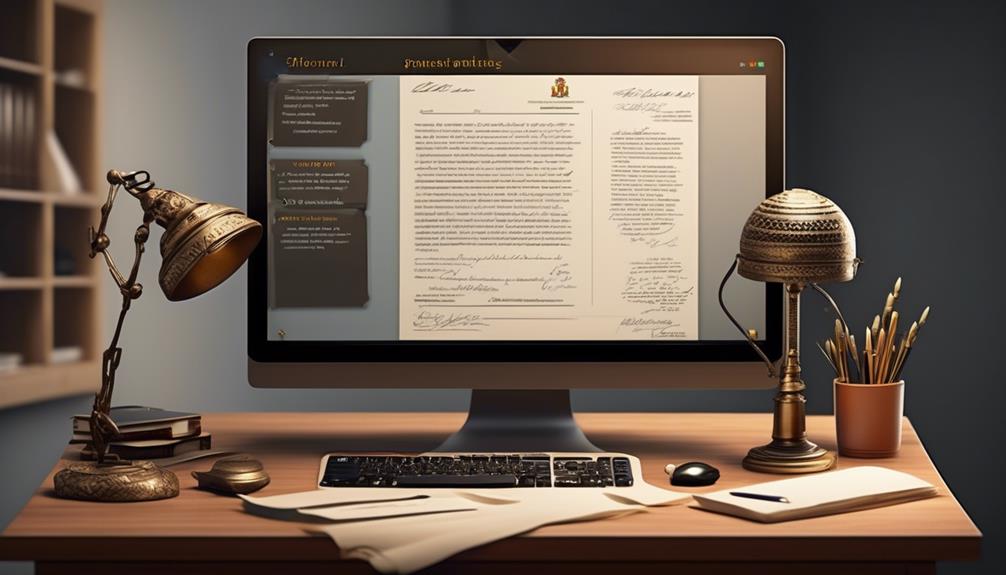
Inquiring effectively in Spanish emails requires a nuanced understanding of formal and informal language usage, as well as appropriate salutations and sign-offs. When making inquiries in Spanish emails, it's crucial to take care in selecting the appropriate level of formality based on the recipient and the context.
Here are three key points to consider when making inquiries in Spanish emails:
- Know the Name: Addressing the recipient by their name, especially when inquiring about something, adds a personal touch and shows respect. If the recipient's name is unknown, using 'A quien corresponda' can be a polite way to address them.
- Use Appropriate Salutations: The use of 'Buenas' can be more informal and casual, while 'Buenos días/tardes/noches' is more formal. Choosing the right salutation sets the tone for the rest of the email.
- Consider Sign-Offs: The sign-off chosen, such as 'Saludos cordiales,' can convey warmth and respect. Understanding the nuances of different sign-offs is essential for creating a positive and polite impression.
When writing emails in Spanish, these considerations are vital for making inquiries effectively and conveying the desired level of professionalism and respect.
Sending or Accepting Invitations in Spanish Emails
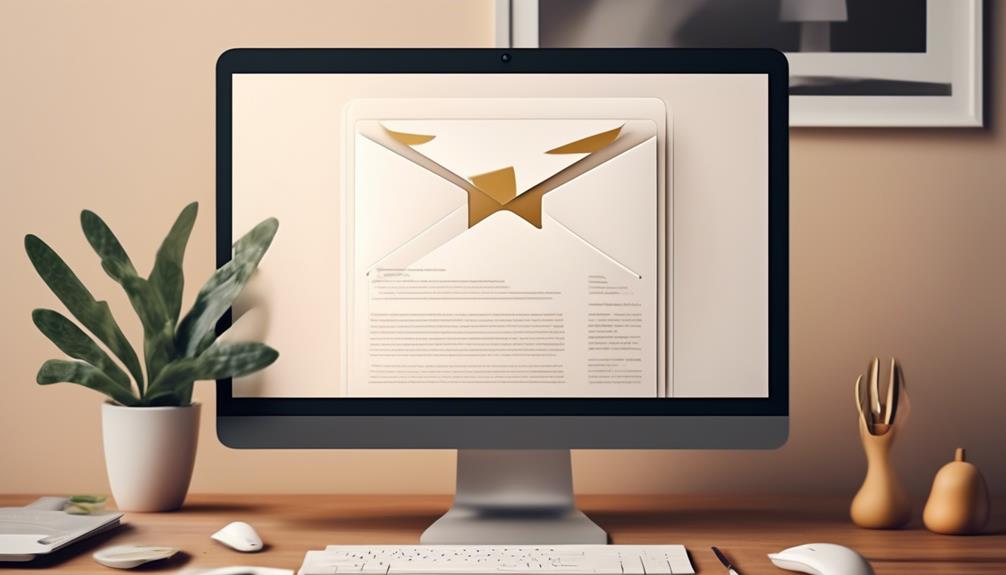
We will now address the important topic of sending or accepting invitations in Spanish emails.
Whether it's accepting event invitations or sending out meeting invitations, it's crucial to use the appropriate language and formality to ensure effective communication.
Let's explore the nuances of expressing acceptance or extending invitations in Spanish emails.
Accepting Event Invitations
To politely accept an event invitation in a Spanish email, one may use the phrase 'Con gusto aceptamos la invitación' to convey enthusiasm and gratitude for the invitation. When accepting event invitations, it's important to follow proper etiquette and convey appreciation.
In Spanish emails, consider addressing the sender with 'Estimado/a' for formal events or 'Querido/a' for informal ones. Express eagerness to attend using phrases such as 'Esperamos con entusiasmo el evento'. Additionally, it's polite to confirm attendance by stating 'Confirmamos nuestra asistencia'.
Always close the email with a courteous phrase like 'Agradecemos la invitación' to express gratitude. Remember, embracing a warm and thankful tone is key when accepting event invitations in Spanish emails.
Sending Meeting Invitations
Upon graciously accepting event invitations in Spanish emails, one may seamlessly transition to sending meeting invitations by maintaining a formal and polite tone while adhering to proper email etiquette. When writing email meeting invitations in Spanish, it's crucial to use formal greetings such as "Estimado/a" followed by the recipient's title and last name. Including the phrase "A quien corresponda" when the recipient is unknown is also important. The body of the email should clearly state the purpose of the meeting, including date, time, and location details. Sign off the email with "Saludos cordiales" or "Atentamente" for a polite tone. Below is a table to illustrate the appropriate phrases and greetings to use for sending meeting invitations in Spanish emails.
| Formal Greeting | Informal Greeting |
|---|---|
| Estimado/a [Title] [Last Name] | Querido/a [First Name] |
| A quien corresponda | Buenos (dias/tardes) |
| Saludos cordiales or Atentamente | Buenas or Cariño |
Reasons for Writing Emails in Spanish

When considering the importance of professional communication and language proficiency, writing emails in Spanish serves as a valuable tool for enhancing linguistic skills and fostering professional relationships. There are several compelling reasons for writing emails in Spanish:
- Cultural Understanding: Expressing oneself in Spanish demonstrates respect and consideration for the language and culture of Spanish-speaking recipients. It shows a willingness to engage on their terms, fostering goodwill and understanding.
- Career Advancement: In today's globalized world, proficiency in Spanish can open up new opportunities for career advancement. Writing professional emails in Spanish showcases the ability to communicate effectively across linguistic and cultural boundaries, which is a highly sought-after skill in many industries.
- Personal Growth: Mastering the art of writing emails in Spanish not only enhances language skills but also promotes personal growth. It allows for greater empathy, understanding, and adaptability, which are essential qualities for successful professional and personal relationships.
Spanish Vocabulary When Writing an Email
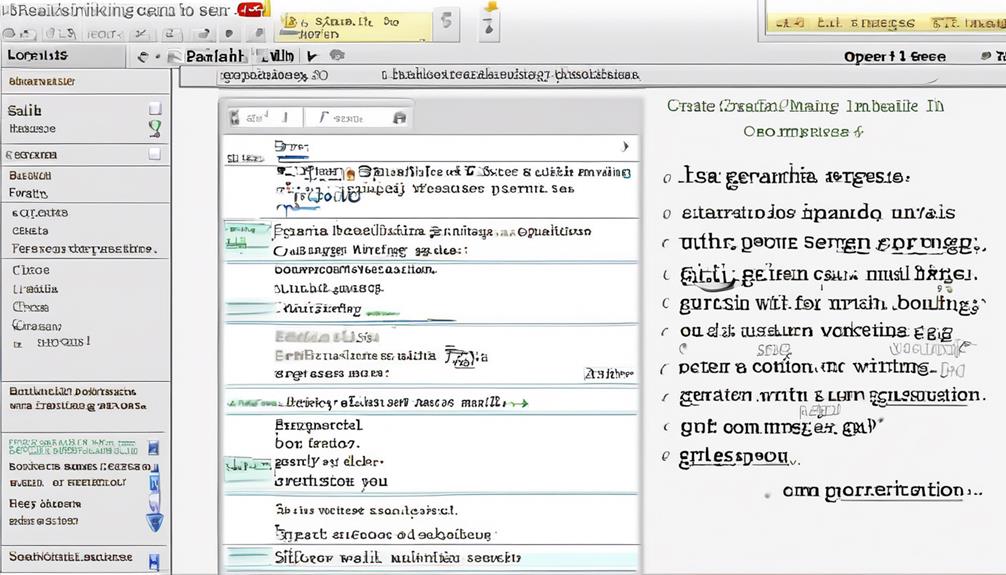
As we explore the intricacies of writing professional emails in Spanish, it becomes imperative to delve into the nuances of Spanish vocabulary that play a pivotal role in crafting effective and culturally appropriate communication. When composing emails in Spanish, the choice of vocabulary can significantly impact the tone and formality of the message. The table below highlights some key Spanish vocabulary words and phrases commonly used when writing emails, along with their English equivalents:
| Spanish | English |
|---|---|
| Tú / Te | You (informal) |
| A quien corresponda | To whom it may concern |
| Estimado Señor (apellido) | Dear Mr. (last name) |
| Cordialmente | Cordially |
Careful consideration of these vocabulary choices is essential for effectively conveying the desired level of formality and respect in Spanish emails. By utilizing appropriate Spanish vocabulary, one can ensure clear and culturally sensitive communication in email correspondence.
Key Email Writing Phrases
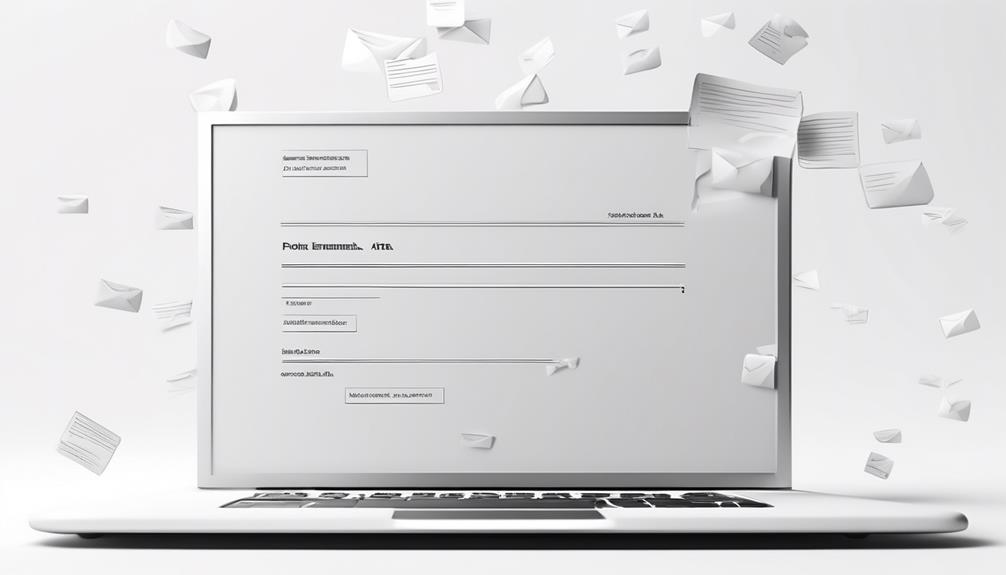
What essential phrases should one incorporate when crafting professional emails in Spanish to ensure effective and culturally sensitive communication?
When writing email in Spanish, it's crucial to include key phrases that convey professionalism and respect. Here are three essential phrases to incorporate for impactful and culturally sensitive communication:
- Addressing Someone Formally: Start your email with a formal greeting such as 'Estimado/a' when addressing someone formally (usted). This sets the tone for a respectful and professional exchange.
- Clearly Stating the Purpose: Use phrases like 'Le escribo para' or 'Me gustaría' to express the reason for writing the email. Clearly stating the purpose of the email demonstrates clarity and consideration for the recipient's time.
- Polite Sign-Off: Conclude your email with expressions like 'A su disposición' or 'Gracias de antemano' to convey politeness and appreciation. A polite sign-off leaves a positive impression and fosters a respectful professional relationship.
Incorporating these key phrases into your emails in Spanish is an integral part of effective communication and demonstrates your commitment to culturally sensitive and professional correspondence.
Business Emails in Spanish

Let's address the importance of maintaining a formal tone in business emails in Spanish, as it reflects professionalism and respect.
We should also emphasize the significance of using polite language to show courtesy and consideration towards the recipient.
Furthermore, it's crucial to ensure that our communication is clear and concise, avoiding any ambiguity or confusion in our exchanges.
Formal Tone in Emails
In formal business emails written in Spanish, it's essential to employ appropriate greetings and sign-offs to maintain a professional tone and etiquette. When addressing someone formally (usted), start an email with 'Estimado/a' followed by a colon instead of a comma. This signifies respect and sets the formal tone for the communication.
Additionally, use formal sign-offs such as 'Atentamente' to conclude the email, conveying professionalism and respect. It's crucial to avoid casual greetings like 'Hola' or 'Ey' as they aren't suitable for formal business emails in Spanish.
Expressing gratitude and offering assistance in the closing of a formal email also contributes to maintaining a polite and professional tone, leaving a positive impression on the recipient.
Polite Language Usage
Transitioning from the discussion of formal tone in emails, it's imperative to consider the usage of polite language in business emails written in Spanish, reflecting the varying levels of formality and the impact on greetings and sign-offs.
When addressing someone formally (usted), it's important to use phrases like 'Le escribo para' to explain the purpose of your email. Greetings such as 'Estimado/a' or 'Distinguido/a' are commonly used to show respect. Furthermore, sign-offs like 'Gracias por su atención' or 'Quedo a la espera de su pronta respuesta' express gratitude and anticipation respectfully. Additionally, if the recipient is unknown, 'A quien corresponda' is used.
Remember to use 'tu' and 'te' when addressing someone informally (tú), and consider using 'Saludos cordiales' as a warm sign-off.
These nuances in polite language are essential when writing emails in Spanish, especially in a business context.
Clear and Concise Communication
When crafting business emails in Spanish, it's essential to prioritize clear and concise communication to effectively convey your message and maintain professionalism.
Here are some useful tips to ensure your message is communicated clearly and effectively:
- Use direct and straightforward language to convey your points without ambiguity or confusion.
- Organize your thoughts logically and structure your email in a way that's easy to follow and understand.
- Avoid unnecessary details and irrelevant information to keep your message concise and to the point.
If you have any questions or need further assistance on how to write email in Spanish or any other related topics, feel free to contactarme en el momento que prefiera.
Writing Emails Like a Spaniard

Writing emails like a Spaniard involves understanding the nuances of formal and informal greetings and sign-offs, as well as using appropriate language to address both known and unknown recipients. When writing emails in Spanish, it's important to consider the level of formality based on your relationship with the recipient. Addressing someone informally requires the use of 'tu' and 'te' (tú), while using 'usted' signifies a more formal approach.
When the recipient is unknown, it's common to use 'A quien corresponda' as a polite way to address the email. In the Spanish culture, sign-offs such as 'Saludos cordiales' are akin to 'best regards' or 'warm regards' in English. Additionally, phrases like 'Le escribo para' are commonly used to explain the purpose of the email in a polite and formal manner.
Understanding and applying these cultural nuances in writing emails is essential for effective communication in Spanish.
Are the Same Rules for Writing Emails in Spanish Applicable When Writing to a Teacher?
When writing an email to a teacher in Spanish, it’s important to follow the same rules as when writing to anyone else. Use formal language, proper salutations, and clear, respectful communication. Just like with any professional communication, it’s essential to maintain a respectful and professional tone.
Frequently Asked Questions
How Do You Start an Email in Spanish?
We typically start an email in Spanish with a polite greeting such as 'Estimado/a' for a formal recipient or 'Hola' for a more casual tone. It's important to use the correct title and name if known.
Following the greeting, we introduce ourselves and the purpose of the email. This sets a respectful and professional tone, which is crucial in Spanish communication.
How Do You Say Regards in Spanish Email?
We say 'regards' in Spanish emails using formal closings like 'Atentamente,' 'Saludos cordiales,' or 'Un cordial saludo.' These convey a polite and professional tone. Each phrase has its own nuanced meaning, allowing for flexibility in various professional contexts.
Using these phrases demonstrates respect and consideration for the recipient. It's important to choose the appropriate closing based on the formality and nature of the email.
How Do You Start a Letter in Spanish?
Starting a letter in Spanish involves using the appropriate greeting based on the level of formality. We can begin with 'Estimado/a' for a formal address or 'Hola' for a more casual tone.
It's important to consider the recipient's familiarity and relationship. This initial greeting sets the tone for the rest of the letter and creates an impression of respect and courtesy.
It's an essential aspect of effective communication in Spanish.
How Do You Write a Formal Greeting in Spanish?
We start a formal email in Spanish with 'Estimado/a' to address the recipient. If the recipient is unknown, we use 'A quien corresponda.'
Additionally, we use 'Buenos días' or 'Buenas tardes' as formal greetings.
To sign off, we use 'Saludos cordiales' or 'Atentamente.'
These are key elements in crafting a formal email in Spanish.
Conclusion
In conclusion, when writing emails in Spanish, it's crucial to carefully consider the levels of formality in the language.
By using appropriate greetings and sign-offs, as well as utilizing the correct vocabulary and phrases, one can effectively communicate in a respectful and professional manner.
Remember to tailor your language to the specific context and audience, and you'll be well on your way to mastering the art of writing emails in Spanish.
